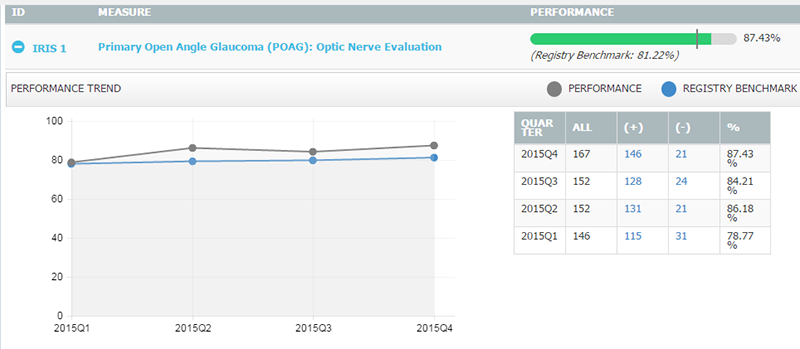Transforming the Impact of Eye Care Through Data

Automatically syncing data eliminates the need for painstaking manual entry. This saves valuable time that can be spent with patients.
The Academy's IRIS Registry® (Intelligent Research in Sight) is the nation's first EHR-based comprehensive eye disease and condition registry. It is a centralized data repository and reporting tool that collects patient data and performs statistical analysis to produce easy-to-interpret, national and inter-practice benchmark reports. Physicians can then see how factors like pre-existing conditions, risk factors, age and gender affect outcomes for various conditions.
Results can be compared to the larger aggregated data, such as: "What is the return rate to the OR within the first 30 days postop of cataract surgery and how does it compare to the national norm?" This type of research can be done virtually through the IRIS Registry, without bogging down the practice's own EHR.
The IRIS Registry also helps Academy members successfully meet regulatory demands. Eligible physicians who sign up and meet the reporting requirements can use the IRIS Registry to report clinical quality data to the Physician Quality Reporting System and the Medicare EHR incentive program (meaningful use). The IRIS Registry will automatically extract and submit data for PQRS measures to the Center for Medicare and Medicaid Services on a practice's behalf.
The IRIS Registry has collected data from 4,017 practices and 12,172 providers who saw 22 million unique patients over 77 million patient visits. These records allow us to extrapolate data in a fraction of the time it would have taken 10 years ago. Now it is easy to retrieve statistics such as:
Of all patients seen by an ophthalmologist:
- 31% had at least one, and 5% had two or more, of the following: age-related macular degeneration, diabetic retinopathy, primary open-angle glaucoma, or cataract surgery.
- 12% have AMD
- 11% have primary open-angle glaucoma
- 7% have diabetic retinopathy
Read more: